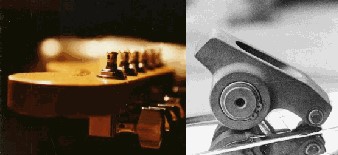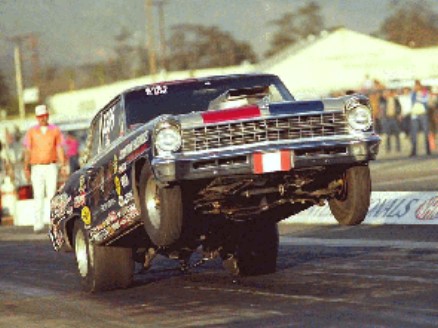



I am going to try and cover what it takes from the oil pan to the air cleaner, and what is in between, to create a normally aspirated V8 engine that runs as great as it sounds.
They call their small block a Mouse Motor, their big block a Rat Motor. The big block Chevrolet, like the above pictured, is my favorite kind of Rat. But make no mistake about it, this pet is no fifty mile per gallon hybrid. It takes a lot of fuel to keep this Rat fed, and the Elephants will need more. (An Elephant is the most powerful mammal on earth and a Top Fuel Nitro Methane burning Big Block Hemi at 7000 horsepower is the world’s most powerful passenger car engine.) Now it is time to get on with the heavy logic about to be dispersed here. All Sane people love the environment. To say nobody likes smog is the understatement of the century. So here is the low down. Ignorant people just arbitrarily condemn what others are doing based on their own delusions, which they try to justify with fictional facts. I have heard people say that hot rods put out one hundred times the pollution of any thing else, and this is a prime example of a person going on a fraudulent tirade. Actually Detroit made a case against any pollution control devices being used, citing that nothing is breathable that comes out of the exhaust of any internal combustion engine, no matter what you do to it. High performance cars with a rough idle were sold in the showroom as new from the factory. This was when you could drive at 70 miles per hour during rush hour on the freeway and people went out for a Sunday drive for fresh air. People did not spend much time idling. The problem is that when traffic is grid locked at five, ten, fifteen miles per hour or just stopped for long periods of time it stinks. All the pollution control devices can do is reduce the amount of particulates and the odor. Sometimes even pollution controlled cars exhaust stinks even worse, like rotten eggs, from the catalytic converter. Also to consider, is that the fuel air mixture of pollution controlled engines is much leaner, which means for every gallon of gasoline burned, 22 gallons of air are burned, destroyed, converted into a toxic gas. A Hot Rod runs a richer fuel air mixture which means that for every gallon of gasoline burned, 14 gallons of air are burned, destroyed, converted into a toxic gas. Yes my friends, the Hot Rod destroys less air per mile driven! You have to consider how much air is destroyed, not just how much dirt comes out of the exhaust, which eventually, due to gravity, ends up on the ground. The particulate problem can even be addressed by the switch to lighter fuel such as alcohol, which also destroys even less air at about 11 gallons of air burned for every gallon of alcohol. So consider these realities before you attack the Hot Rod as some kind of a problem. So now we know Hot Rods can be run on Alcohol, and guess what, they just make even more power than with gasoline and run cleaner. Just change the fuel air mixture, this and that, and just like Indy cars, Formula cars and N.H.R.A. Alcohol dragsters your Hot Rod is ready to go. What is more important to know is that Hot Rods are such a minority that any debatable additional pollution they create is insignificant because Hot Rods are few and far between. The average ordinary everyday diesel is far dirtier, furthermore vehicles that are not properly maintained, and or are run well beyond their engines life span, generate more pollution than any Hot Rod ever could. For example a little four cylinder economy car with a ruptured automatic transmission modulator will put more particulate pollution in the air in one tank full of gas than a hot rod will during the entire life of the engine. The engine will suck automatic transmission oil into the intake manifold until the modulator is replaced or the transmission burns up. That is how important it is to properly maintain a vehicle. So before you cry hypocrite…
Keeping your own car running in top condition is a major good deed. Performance enthusiasts maintain their hardware with pride and go through their entire engines more often than some people change their spark plugs. A car enthusiast is a “Gear head” for those readers whom are lost but reading this any way in spite of the fact they don’t know what a spark plug is, and drive their car until the tow truck comes to get it. This article is not about basic engine repair or overhaul. It is about the engineering of improving the performance of an average V8 engine above and beyond the way it ran when stock. The informed know it is not moronic to push for zero emissions electric vehicles, hybrids on one hand and write a hot rod engineering engine building article with the other. The majority is responsible for the majority of the pollution and the majority are not Hot Rodders. Furthermore racing is the answer to the problem not the problem. Early cars ran less than a thousand miles before they needed major engine repair and were problematic at best. At the first running of the Indianapolis 500 mile race, top speeds were in the fifty mile per hour range. People in that day and age were injured and killed at speeds most take for granted as normalcy today to transport their entire family anywhere. Racing has defined, created and expedited progress and improvements in every regard. Going further, farther, faster, on less fuel to cross the finish line first, safely, also resulted in cleaner and more efficient vehicles. Racing is absolutely responsible for lowering emissions, reducing pollution as a byproduct of extracting every amount of energy from every drop of fuel. Fuel injection, electronic ignition, cylinder head and camshaft resonance and exhaust header tuning as applied to fuel economy and the reduction of emissions have made remarkable improvements. As an example the Small Block Chevrolet introduced as a 265 cubic inch V8 produced more pollution than a new 420 cubic inch engine producing over four times as much horsepower! Get excited! Forget about smog guilt unless you want to ride a goat bare back around town while you pick up after it. Aside from being able to suckle some milk out of the critter during pit stops while the goat eats a beer can, the Rick Shaw has a superior top speed. Things are getting better. Discoveries by individuals and groups whom modify and experiment is the backbone of innovation. In the future all this and more racing will be here ushering in the new technologies that will improve all our lives hopefully sooner than later. Seeing full scale electric cars racing at the Long Beach Grand Prix was hopefully the tip of the ice berg, a coming attraction. While the deafening sounds and eye watering smells of racing are the excitement and ironically part of the draw and attraction of racing, someday it may dawn upon people how truly exciting it is to move the future into the present. For now our hot rods don’t get fifty miles per gallon, have a range of five hundred miles and run around town for the first forty to fifty miles on batteries making zero emissions for our short runs an everyday normalcy. The idea of this article is to motivate people. If people can partake in a successful venture to build a hot rod now, perhaps they will, in the future, create and further progress the next paradigm shift, which would probably be, rear or all wheel drive electric and or hybrid vehicles. Currently there actually are environmental issues even with hybrid vehicles since their additional efficiency is offset by the amount of energy required to manufacture the vehicles, the environmental impact of mining nickel for the batteries etc., etc., and, of course, the obvious reality that electricity will have to be generated in a non fossil fuel, environmentally friendly way, to recharge these vehicles. I applaud people purchasing hybrids because they are funding the effort which may eventually solve these problems. One more thing I want to address here is the street racing issue. I in no way shape or form advocate any dangerous activity in which property damage and or personal injury can result. People with real high performance vehicles are usually very intelligent and do not even want you to lean against their Hot Rods for fear you might scratch the paint. Their vehicles are expressions of art and the last thing they would ever want to do is wreck them. It is true that racing owes it’s heritage to the street, but in an innocent way. Mercedes Benz, which manufactured the first early cars, were raced by the French in the streets of France in what has become an international Grand Prix. Standing start quarter mile racing born right here in the United States of America in sunny California, known as Drag Racing, also got it’s start on the street of rural communities, which justified the legalization as a way to safely contain and control the events. Constructing racing facilities obviously advanced safety and every other aspect of progress and a positive constructive outcome. I mention this because I refer sometimes to the term “street legal racing” which actually has nothing to do with racing on any street, for those people who may be reading this interesting article, but have no experience with racing.

